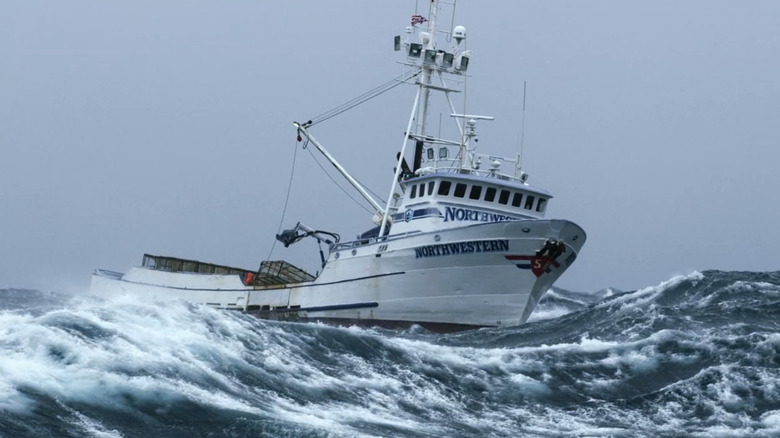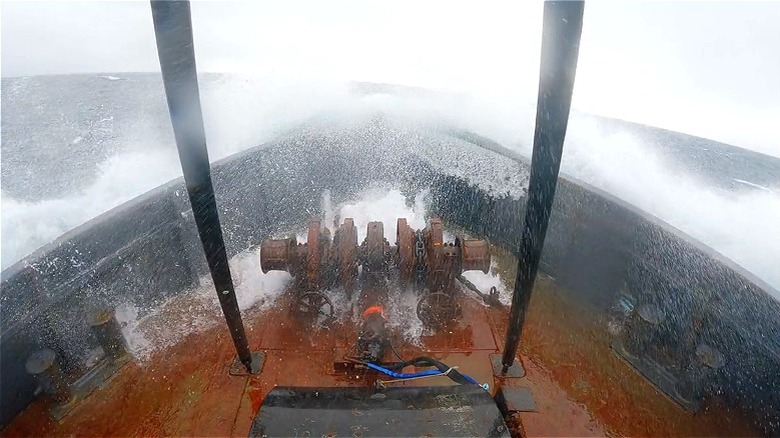Deadliest Catch's Edgar Hansen Felt Real Fear In A Near-Capsize Situation
Recreational fishing is usually a soothing activity many engage in to relax and enjoy nice weather. However, those that do commercial fishing, especially in hostile climates, view the action as something else entirely. This is because the profession is one of the most dangerous in the world, mainly because many of the best locations for fish and crabs can be in turbulent and unforgiving waters.
These hostile locations make for a good basis in documentary-style television, which is probably why "Deadliest Catch" has proven to be so popular. One of the most prolific families on the hit television show are the Hansens, with Edgar Hansen being the younger brother of Sig Hansen, who is the captain of the Fishing Vessel Northwestern.
Speaking with the Herald Tribune in 2013, Edgar was asked what was one of the scariest situations he experienced out on the water. He mentioned a moment with his cousin when the winds were blowing up to 60 mph, and the rest of the crew were trying to unload as fast as possible as giant waves came in sets of three. Edgar explained, "At one point I look over and he grabbed the bottom of his chair and the boat started to roll over, so it's like we're surfing on this wave. I ended up sitting on a window, and it threw everyone out of their bunks to where they were laying on the walls. That's the only time I've ever been scared out there."
Waves can grow up to a terrifying 112 feet
Even though the Hansen family are fishing veterans, Edgar has a good reason for his fear of giant waves and high winds, which probably stems from the family's shared experience on the water. This is because tall waves can be one of the dangerous aspects of commercial fishing. The United States Coast Guard reported that the average loss of fishing vessels is usually around 91 a year, generally caused by inclement weather that can beach or capsize boats.
In addition, the National Weather Service notes that sustained winds of just 33 mph can result in a five percent chance of a wave greater than 40 feet in a 24-hour period. At 60 mph, as Edgar mentioned earlier, winds could produce waves of much larger size, which certainly would be a scary thing to behold. Imagine being on a boat and facing a wall of water that towers much higher than the vessel! The National Weather Service also mentions a wave with a height of 112 feet in the Pacific Ocean that occurred in 1933, though waves of this magnitude are exceptionally rare. Still, the fact that the ocean can spook a veteran like Hansen certainly highlights that working on "Deadliest Catch" isn't for everybody.

